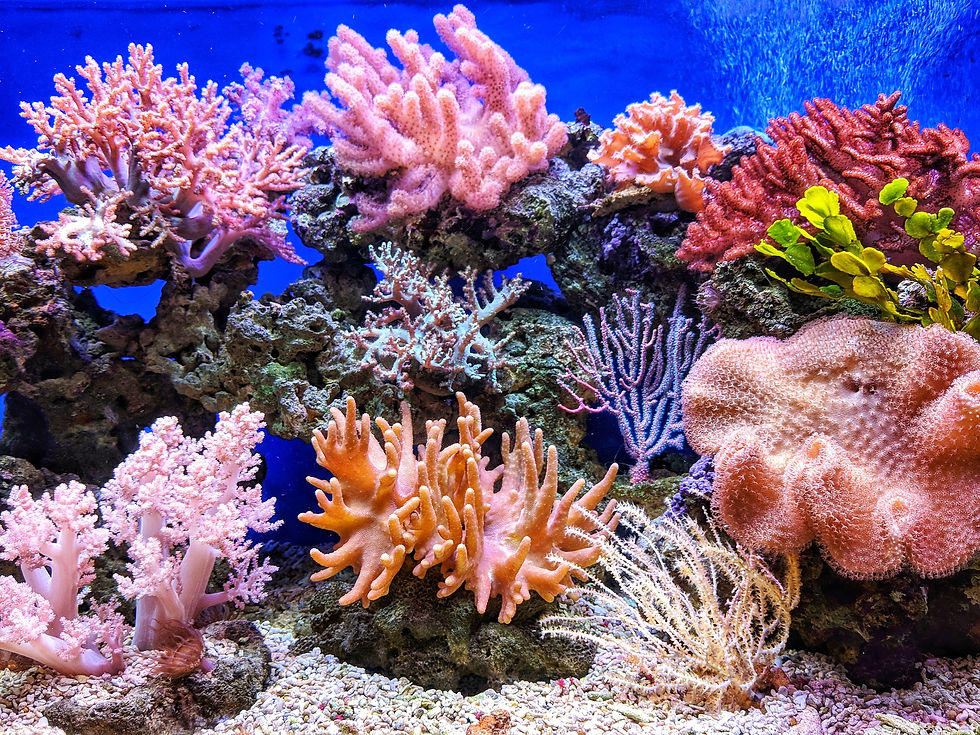Is Our Health Paying the Price for Our Fashion?
- Charlotte Sunman

- Jun 23, 2021
- 3 min read
Updated: Aug 16, 2021
Fast fashion
Fashion is a multi trillion dollar industry that continues to grow. The global shift East has led to cheap and fast fashion with polyester being used in 60% of clothes, and our reliance on polyester is one of the reasons why the fashion industry is one of the most polluting industries in the world; both in terms of its emissions-heavy production and the non-biodegradable waste it leaves behind.
The use of such materials in clothes consequently causes microfibres to be released in both the production and the usage of the item.
Pollution of the oceans
Plastic particles washed off from products such as synthetic clothes and textiles contribute to 35% of primary microplastics polluting our oceans. This means these fibres are getting into our food chain, ending up on our plates for human consumption.
Humans consume a vast variety of seafood. With the health benefits of Omega-3 being promoted we are advised to eat three portions of fish a week. When these microfibres enter the oceans the marine life are exposed to our waste meaning we are then consumers of this ourselves.
So, we may look good in our new clothes and designer times, but at what cost?
In the last few decades, China has gone through an industrial revolution, becoming one of the world’s largest economies. With the exploitation of cheap labour, it has seen many pleased with the reduction in clothes prices, with shops such as Primark selling clothes for rock bottom prices.
What many people don’t see however is the implications of this on the environment, with 90% of clothes being transported by container ship. This not only has an effect on the environment via carbon emissions, but also the ocean, with pollutants from the ships and the vast amounts of plastic released into waterways.
These microfibres have been proven to have links to reproductive problems, cancer, and DNA damage. Particle pollution such as asbestos and fine dust has long been known to damage lung tissues, leading to cancer, asthma attacks, and other health problems.
Health consequences from industrialisation
Many people don’t realise the real effects of purchasing items in today’s consumer society and that they are contributing to the degradation of our planet. Europe and Central Asia alone dump the equivalent of 54 plastic bags worth of microplastics per person per week into the oceans.
The oceans are our biggest carbon sink, by destroying the oceans we are inevitably destroying ourselves. Not only this but the more shorter term effects of us consuming what is in the ocean can lead to longer term health effects.
China is a leading example of the health effects pollution can have on people. With pollution levels in 2019 three times over the World Health Organisation’s standards, we can see first hand the drastic effects the industrial fashion industry has on people.
In China, estimates say 90% of the local groundwater is polluted and, according to the World Bank, 72 toxic chemicals in the water supply come from textile dyeing. People in China have both respiratory diseases and diseases caused by drinking polluted water. These rivers then lead into the ocean and thus into the seafood we consume.
China is a direct reflection of what’s happening all over the world, although many people like to isolate the problems to China alone. However what most people don’t see is we are fuelling this problem, one which is only growing and if it doesn’t change will have irreversible effects on the world and our health.
The ways in which we contribute to the problem
Even though we may not be aware of our role in enabling fast fashion and increasing pollution, we do it in everyday ways and contribute to the degradation of the oceans. Every time we wash our clothes it is said 700,000 fibres are released into the waterways, which then then find their way into our bodies through our diets.
Microfibres are not degradable and so even in our water there may be traces of toxins and pollutants. We fund and enable this problem through purchasing non-sustainable clothing items from retailers that source internationally and produce at a low cost.
To help reduce this you can recycle clothes, re-wear clothes, and shop locally. With fashion trends always changing the accessibility of cheaper fashion appeals as people are constantly changing styles and their wardrobe.
More sustainable solutions such as the online platform ‘Depop’ enables people to buy second hand clothes. This is a more sustainable way to shop and can slow down supply and demand for new products.
Fashion is a multi-trillion dollar industry that’s fuelled by wealth and profit, with little regard for the effects on the environment. With less demand we will see less being produced and a decrease in pollution.
With less toxins ending up on our plates via the oceans and various ways it enters the food chain, it will lead to a healthier, cleaner society.



Comments